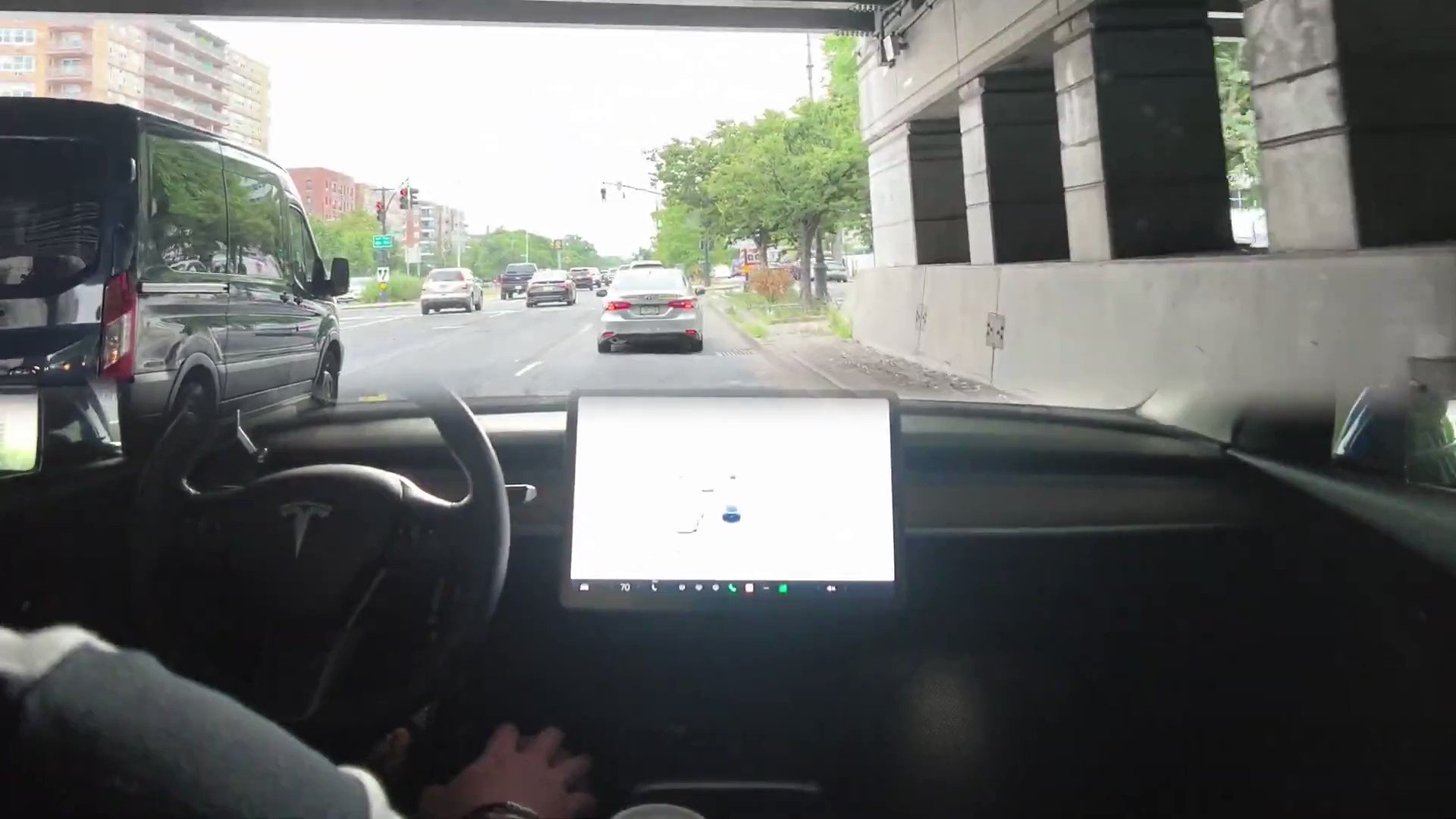The Unraveling Of Elon Musk's Robotaxi Plans

Table of Contents
Technical Hurdles in Achieving Full Autonomy
The core challenge hindering the rollout of Elon Musk's robotaxi service lies in achieving true Level 5 autonomy. This elusive goal represents the ability of a vehicle to navigate any road condition without human intervention – a feat far more difficult than initially envisioned.
The Challenges of Level 5 Autonomy
Achieving Level 5 autonomy presents a multitude of complex challenges:
- Unpredictable Human Behavior: Human drivers are notoriously unpredictable. Self-driving systems must account for erratic lane changes, unexpected stops, jaywalkers, and other unpredictable actions. Predicting and reacting to these variables in real-time is incredibly difficult.
- Edge Cases in Driving Scenarios: Autonomous vehicles encounter countless edge cases – unusual or unexpected situations not encountered during testing. These can range from navigating construction zones to dealing with unusual weather conditions.
- Software Limitations: The software controlling autonomous vehicles is incredibly complex. Bugs, glitches, and unexpected software failures can lead to dangerous situations. The sheer volume of code requires extensive and ongoing testing and refinement.
- Sensor Limitations: Reliance on sensors like lidar, radar, and cameras is critical. However, these sensors can be affected by adverse weather conditions (heavy rain, snow, fog) significantly reducing their effectiveness, leading to inaccurate object recognition and impaired decision-making.
While accident statistics for fully autonomous vehicles are still limited due to the technology's nascent stage, even minor incidents highlight the inherent challenges in achieving flawless performance in complex real-world scenarios.
Software Development and Testing Limitations
Developing robust and reliable self-driving software is a monumental task. It requires:
- Debugging Complex Code: The software controlling autonomous vehicles consists of millions of lines of code. Identifying and fixing bugs is a time-consuming and complex process.
- Ensuring Safety in Diverse Environments: The software must function reliably across diverse environments, from bustling city streets to quiet suburban roads. Testing in all conceivable scenarios is a herculean task.
- Managing Large Datasets for Training AI Models: Training AI models for autonomous driving requires massive datasets of driving data. Gathering, processing, and annotating this data is costly and time-consuming.
Tesla's software updates, while showcasing progress, also underscore the ongoing challenges. Each update often introduces new features and fixes bugs, highlighting the iterative nature of software development in this domain. The frequent updates, while aiming to improve functionality, sometimes reveal unforeseen issues, underscoring the complexity involved.
Regulatory and Legal Obstacles to Robotaxi Deployment
The path to widespread robotaxi adoption is further hampered by a complex regulatory landscape and persistent public safety concerns.
Navigating Complex Regulatory Landscapes
Deploying robotaxis requires navigating vastly different regulations across various jurisdictions:
- Licensing Requirements: Obtaining the necessary licenses and permits to operate robotaxis varies significantly from state to state and country to country. This regulatory fragmentation creates hurdles for companies aiming for nationwide deployment.
- Insurance Implications: Determining liability in accidents involving autonomous vehicles remains a significant challenge. Existing insurance models may not adequately address the unique risks associated with self-driving technology.
- Data Privacy Concerns: Autonomous vehicles collect vast amounts of data. Ensuring data privacy and security while complying with various data protection regulations presents a considerable legal challenge.
Tesla, like other autonomous vehicle companies, faces significant challenges in navigating these complexities. The lack of uniform federal regulations in many countries makes scaling the robotaxi business extremely challenging.
Public Perception and Safety Concerns
Public perception and safety concerns significantly impact the adoption of autonomous vehicles:
- Addressing Public Skepticism: Many people remain skeptical about the safety and reliability of autonomous vehicles. Overcoming this skepticism requires building public trust through demonstrably safe operation and transparent communication.
- Managing Media Coverage of Accidents: Accidents involving autonomous vehicles, even minor ones, receive significant media attention. Effectively managing this media coverage is crucial to prevent negative public perception.
- Building Trust in the Technology: Building public trust requires a commitment to safety, transparency, and rigorous testing. Demonstrating the technology's reliability and safety is paramount for widespread acceptance.
Public opinion surveys regularly reveal a mix of enthusiasm and apprehension about autonomous vehicles. Addressing these concerns openly and transparently is crucial for fostering wider adoption of robotaxi services.
Financial and Economic Implications of Robotaxi Delays
The delays in Elon Musk's robotaxi plans have significant financial and economic implications.
Impact on Tesla's Stock Price and Investor Confidence
The repeated delays in delivering on the robotaxi promise have impacted Tesla's stock price and investor confidence:
- Investor Expectations vs. Reality: Investors initially placed high expectations on the robotaxi project, believing it would be a significant revenue driver for Tesla. The delays have led to some disappointment and reduced confidence.
- The Impact of Missed Deadlines on Market Valuation: Missed deadlines erode investor confidence, resulting in market valuation adjustments. This creates pressure on Tesla to accelerate development and delivery.
- The Effect of Competition from Other Autonomous Vehicle Companies: Tesla faces intense competition from other established automakers and technology companies investing heavily in autonomous vehicle technology. Delays allow competitors to gain market share and potentially overtake Tesla in the robotaxi race.
The Economic Viability of a Fully Autonomous Ride-Hailing Service
Even with technological breakthroughs, the economic viability of a fully autonomous ride-hailing service remains questionable:
- High Initial Investment Costs: Developing and deploying a robotaxi fleet requires significant upfront investment in vehicle development, infrastructure, and software.
- Operational Expenses: Ongoing operational costs, including maintenance, insurance, and charging infrastructure, are substantial.
- Pricing Strategies: Finding the right pricing strategy to ensure profitability while remaining competitive with existing ride-sharing services is challenging.
- Competition with Existing Ride-Sharing Services: Established ride-sharing companies are also investing in autonomous vehicle technology. Competition in the robotaxi market will be fierce.
Conclusion
Elon Musk's robotaxi vision faces significant obstacles. The technical challenges of achieving Level 5 autonomy, combined with regulatory hurdles and financial uncertainties, have led to considerable delays. While the long-term potential remains, the path to widespread robotaxi adoption is proving far more complex and protracted than initially anticipated. Understanding the current challenges is crucial for investors, policymakers, and the public alike. Further research and development are essential to overcome these limitations and realize the potential of the Elon Musk robotaxi and the broader autonomous vehicle market. Continued monitoring of the Elon Musk robotaxi project and related developments is vital for understanding the future of autonomous transportation. The future of the Elon Musk robotaxi remains uncertain, demanding continued observation and analysis.

Featured Posts
-
 Europes 10 Premier Shopping Destinations
Apr 25, 2025
Europes 10 Premier Shopping Destinations
Apr 25, 2025 -
 Cara Desain Meja Rias Modern And Sederhana 2025 Panduan Lengkap
Apr 25, 2025
Cara Desain Meja Rias Modern And Sederhana 2025 Panduan Lengkap
Apr 25, 2025 -
 Bayern Munich Vs Vf L Bochum Match Preview And Prediction
Apr 25, 2025
Bayern Munich Vs Vf L Bochum Match Preview And Prediction
Apr 25, 2025 -
 Discover Europe 10 Top Shopping Spots
Apr 25, 2025
Discover Europe 10 Top Shopping Spots
Apr 25, 2025 -
 Linda Evangelista And The Power Of Friendship Following Her Mastectomy
Apr 25, 2025
Linda Evangelista And The Power Of Friendship Following Her Mastectomy
Apr 25, 2025
